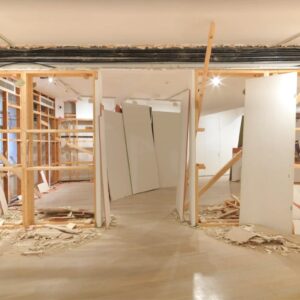
Let’s face it — there’s nothing worse than waking up in the middle of the night, overheated, kicking off the blankets like you’re fighting for your life. We’ve all been there. And if you’ve ever flipped your pillow over for that brief moment of cool relief, you already know how much temperature can affect your sleep.
That’s where a bed cooling system can help — the sleep upgrade you didn’t know you needed. These innovative devices have become the secret weapon of hot sleepers everywhere. But what are they, how do they work, and does sleeping cooler really make a difference?
What Is a Bed Cooling System?
A bed cooling system regulates the temperature of your bed to keep you sleeping comfortably through the night. There are two main types you’ll see on the market:
1. Active Bed Cooling Systems
These are high-tech systems that actively cool your sleep surface using water or air. Think of them like a climate control system for your mattress. They often include a pad or layer that sits on top of your mattress and connects to a small unit that circulates cooled (or heated) water or air through the pad.
Some popular systems even let you set different temperatures for each side of the bed — perfect if your partner sleeps like an ice cube and you sleep like a furnace.
2. Passive Bed Cooling Products
These products don’t use technology but are made with materials that help wick away heat and moisture. Things like cooling mattress toppers, gel-infused memory foam, or breathable bamboo sheets fall into this category.
While passive products can certainly help, active cooling systems give you much more control over your sleep environment.
How Do They Work?
Most advanced bed cooling systems rely on water- or air-based cooling technology:
Water-Based Systems
A thin mattress pad is filled with small tubes.
The system circulates temperature-controlled water through the tubes.
You set your preferred temperature (often anywhere from 55°F to 115°F).
The circulating water pulls heat away from your body, creating a cooler sleep surface.
Water is a great conductor of temperature, so these systems tend to be very effective at maintaining consistent cooling all night long.
Air-Based Systems
The system blows cool (or warm) air into your bedding.
Some models use forced air circulation under the sheets or through a mattress pad.
These systems can feel more like sleeping under a gentle fan, without the noise or direct airflow drying you out.
Some bed cooling systems come with smart technology, allowing you to adjust settings with your phone, schedule cooling phases during your sleep cycle, or gradually warm your bed in the morning to help wake you up naturally.
Why Sleeping Cool Matters
Cooling your bed isn’t just about feeling cozy: there’s science behind it.
Your body temperature naturally drops at night to help you fall asleep and stay asleep. This process is controlled by your circadian rhythm — the internal clock that regulates sleep, hormones, and body temperature.
If your sleep environment is too warm, it can disrupt this process. You might have trouble falling asleep, wake up more often, or spend less time in the deep, restorative stages of sleep.
Proven Benefits of Cool Sleep:
Faster time to fall asleep
Fewer night-time awakenings
Longer periods of deep sleep (the phase responsible for recovery and immune function)
Reduced night sweats and hot flashes (especially helpful for menopausal women)
Improved overall sleep quality
Studies have shown that the optimal room temperature for sleep is typically between 60°F and 67°F. But here’s the catch: cooling your entire bedroom to that temperature isn’t always practical — especially in the summer or if you live with people who prefer warmer conditions.
That’s where bed cooling systems offer a huge advantage — they let you control your personal sleep temperature without freezing out everyone else.
Who Needs a Bed Cooling System?
While almost anyone can benefit from sleeping cooler, bed cooling systems are especially helpful for:
Hot sleepers who wake up sweaty
Couples with different temperature preferences
Athletes looking for faster recovery
People going through hormonal changes (like menopause)
Those living in warm climates
Anyone struggling with poor sleep quality
It’s also worth noting that investing in a bed cooling system can potentially save on energy bills — allowing you to keep your room at a more moderate temperature while still sleeping comfortably.





